Tayma Oasis
Q27365Tayma (Arabic: تيماء): major oasis in the Arabian desert.
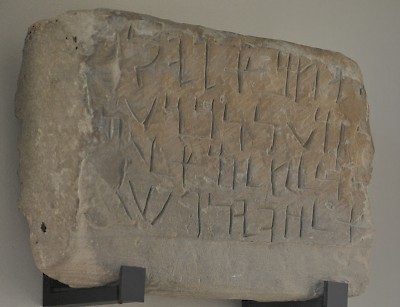
The Tayma Oasis is in the northwest of modern Saudi Arabia, along the trade route from Yathrib (modern Medina) and Khaibar to the Duma Oasis and Mesopotamia. The presence of ancient qanats (i.e., underground irrigation systems) proves that Tayma had a complex agricultural economy. The markers of the fields have been found as well.
The presence of Qurayya painted ware, made in the final quarter of the second millennium BCE, documents trade contacts with the Qurayya Oasis, the copper mine area of Timna, and the Araba valley in the northwest. The Taymanites may have sold dates, alum, and rock salt (found in a saline depression in the neighborhood) and may have received copper in return. A hieroglyphic rock inscription with the name of the Egyptian king Ramesses III (r.1184-1152) suggests that Egyptian merchants knew how to find Tayma, but the oasis had been inhabited since the third millennium BCE.
Assyrian Contacts
The first unambiguous reference to Tayma can be found in the “Suhu Annals”, which mention how an Assyrian governor named Ninurta-Kudurri-Usur captures a merchant caravan from Tayma and the kingdom of Saba (in Arabia Felix, modern Yemen).note This text can be dated to the mid-eighth century BCE and the caravan was seized near the river Euphrates.
Another Assyrian text mentions how in 734 BCE, the Assyrian king Tiglath-Pileser III defeated queen Samsi of the Arabs. Although she retained her position, many other Arab leaders, including the one in Tayma, considered it prudent to pay tribute to the Assyrians.
The inhabitants of Mas’a, of Tayma, and the inhabitants of Saba, Haiappa, Badana, Hatti, the tribe of the Idiba’ileans, whose countries are in the far west, heard the fame of my rule and in one embassy brought to me as their tribute: gold, silver, male and female dromedaries, and all kinds of spices. They kissed my feet.note
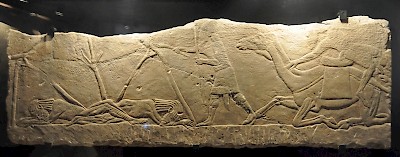
A third Assyrian testimony is the name of a city gate: when king Sennacherib founded Nineveh (after 700 BCE), he called one of its western gates “the gifts from Sumu‘a and Tayma enter through it”.
In the Assyrian age, the Incense Route was becoming increasingly important. Beginning in Arabia Felix, it led through the western part of the Arabian Peninsula to Yathrib, where the northwestern branch led via the Dedan Oasis (modern Al-‘Ula) to Tabuk, the copper mines of Timna, and the Mediterranean, while the northern branch led – as indicated above – to Tayma, Duma, and Mesopotamia.The richness of Tayma was known to the Jewish prophet Jeremiah, who directed one of his prophecies against the oasis.note
The prosperity of Tayma made the extension of the city wall inevitable. Made of mud brick and sandstone slabs, it was about six meters high and originally surrounded an area of about twenty hectares; in the first millennium BCE, it would be expanded time and again, until it surrounded an area of almost a ten square kilometers. Houses were made of stone, again indicating both wealth and the need to defend oneself.
Nabonidus
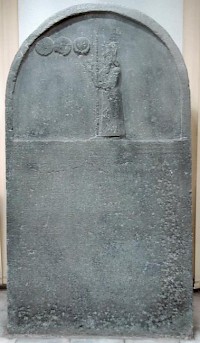
After the demise of Assyria, the new power in the Near East was Babylonia, and king Nabonidus (r.556-539) took a special interest in Tayma. According to the Nabonidus Chronicle, he lived in the oasis for several years, even neglecting his religious obligations in the Esagila temple in Babylon. It is possible that the Taymanite sanctuary that is now known as Qasr al-Hamra was built in this age (or a bit later). An inscription in the Lihyanite language (i.e., the dialect of Dedan) mentions Nbnd mlk Bbl, “Nabend malik Babel” or “Nabonidus king of Babylonia”. A damaged stele showing a king with the symbols of the Sun, Moon, and Venus must represent Nabonidus.
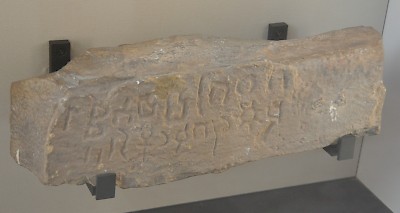
The original language of Tayma, called Taymanatic, was closer to Hebrew and Aramaic than to Arabic. It was not the only language spoken or written in the oasis. Archaeologists have found inscriptions in various Arabic languages, like Lihyanite (or Dedanite), Thamudic (i.e., northern Arabic), and Nabataean. This suggests the cosmopolitan nature of this trade center. After the Nabonidus episode, Aramaic became more important. We do not know which language was spoken, but Taymanatic was completely replaced as a written language.
It is interesting that one of Tayma’s main deities, Ashima, was also venerated in Hamath in Syria, 900 kilometers to the north. The “Al-Hamra cube” shows an Egyptian Apis bull but also Babylonian influences. The cult of the Egyptian deity Osiris is documented in the personal name Abdosiris, Arabic for "servant of Osiris".
Tayma appears to have remained outside the direct Persian sphere of interest, but inscriptions document several conflicts with Dedan: two towns on competing branches of the same trade route, fighting for a market share. In the end, Tayma lost its independence to Dedan. Its king Tulmay left several inscriptions in Tayma. There is also an inscription by a governor named Natir-It.
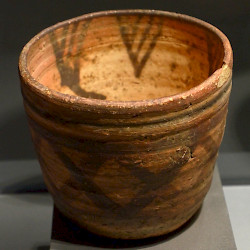 Cup from Tayma |
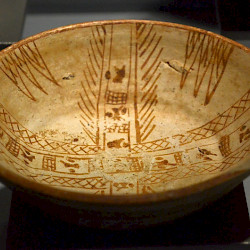 Cup from Tayma |
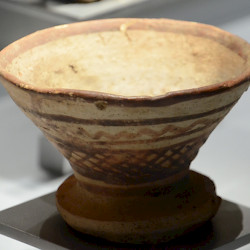 Cup from Tayma |
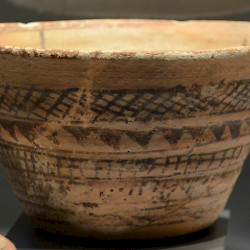 Cup from Tayma |
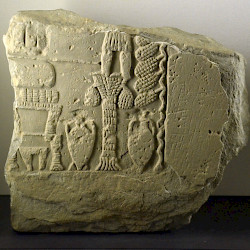 Tayma, Relief of a sacrifical meal; Assyrian influence |
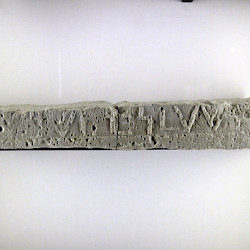 Tayma, Aramaic funerary inscription |
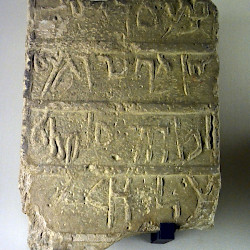 Tayma, Nabataean votive stela |
The main god of Tayma was Slm, which is probably vocalized as Salm. The names of the two other deities were spelled as Sngl' and Sym', and again we do not know the vowels. The last one is also known from Hamath in Syria and may be identical to the Ashima mentioned in the Bible.note
Jewish Tayma
Later, in the Hellenistic and Roman age, Tayma seems to have been part of the Nabataean kingdom. The incense trade continued. Probably writing in the fifth century BCE, the author of the Biblical book of Job mentions Tayma and the Yemenite kingdom of Saba in one breath,note suggesting that he knew that the road from Tayma to Jerusalem started in the deep south.
The Jewish historian Flavius Josephus mentions the Arabian Peninsula as part of the wider Jewish worldnote and it is possible that survivors of the lost war against Rome (66-70 CE) had left the Roman Empire to settle in towns like Tayma. Jewish proper names are indeed documented in Tayma from the early third century CE on. It is also certain that in the first half of the sixth century, a local leader named Samuel ibn ‘Adiya was Jewish; his castle, Qasr Al-Ablaq, still stands.